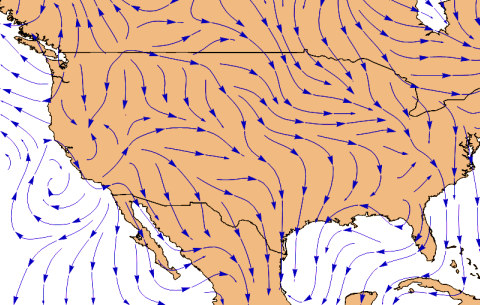- Air Homepage
- Air Quality Testing
- Air Dispersion Model
Which air dispersion model to use
More ideas for
air dispersion model users...
Do you love air quality and how it affects the environment? Check out CALPUFF, an advanced air dispersion modeling system that can help you understand atmospheric pollution. Researchers, scientists, and environmental professionals use CALPUFF to study and simulate pollutant transport and dispersion.
Air Models That Matter: Choosing the Right Puff - Have you ever wondered how pollution travels through the air? With the right model, you can track, predict, and maybe even stop it.
Understanding and mitigating air pollution can help you predict pollutant behavior, influence policy, and contribute to a healthier planet. Are you interested in becoming an environmental detective? Join CALPUFF today and help shape a cleaner, safer future.
Imagine being able to predict how pollutants from industrial facilities, power plants, and even wildfires will disperse in the air, and how they'll affect nearby communities and ecosystems. By using CALPUFF, you can find out how pollutants behave, their movement patterns, and their potential effects on air quality.
Unraveling Air Pollution Mysteries
With CALPUFF, you can become an environmental detective, uncovering the mysteries of air pollution and finding sustainable solutions. It doesn't matter if you're interested in finding out how emissions affect public health, assessing the impact of new industrial projects, or developing pollution mitigation strategies, CALPUFF helps us with all those questions.
You can contribute to important research, influence policy decisions, and be at the forefront of environmental stewardship with CALPUFF. Get in on the community, collaborate with like-minded people, and make our planet cleaner and healthier.
Get started with CALPUFF and be part of the solution for a better environment if you're ready to explore the fascinating world of air dispersion modeling. Together, we can improve air quality and protect future generations' health.
Air (or air quality) dispersion models help scientists figure out how to preserve our environment. Over the past few decades, models have evolved and we now have a lot of different approaches. What type of model is best for a particular project? The benefits of air puff models like CALPUFF, a more advanced one, are discussed here.
The United States Environmental Protection Agency EPA recommends CALPUFF for plume transports over 50 km. Consequently, using CALPUFF for EPA regulatory applications for shorter distances may require appropriate scrutiny by the authorities, even though CALPUFF has been heavily favored for general applications lately. According to the April 2000 EPA Guideline on Air Quality Models, CALPUFF can also be used for complicated stack emissions. Regulatory affairs professionals will look at these on a case-by-case basis and help regulatory and compliance consultants decide what's best.
CALPUFF, Aermod or ISC?
The puff air pollution modelling can be used for many applications. These are especially useful for short-term predictions or when there are complex terrain or meteorological conditions. In addition, it's more accurate at estimating ground-level concentrations.
For modelling within relatively small distances in flatter lands with uniform land usage, steady-state plume model like AERMOD or ISC will do.
That's why it might not be worth the extra resources. It might depend on whether you're comfortable with the straight-line, nominal assumptions on which the simpler plume-flow simulation is based whether to use puff or steady-state air pollution modelling.
Including domain size and potential for space- and time-varying three-dimensional fields of flow influenced by complex terrain, uneven land use, and coastal effects. In addition, the flows may be calm or low with variable directions.
There's a good chance that the steady-state assumption won't be very good for cases with high three-dimensional flow changeability near boundary limits (upslope or downslope or along winding river valleys). In this case, the CALPUFF air dispersion model would be better.
You should also ask whether three-dimensional or temporal distribution of air contaminants matters when deciding which model is best for each situation. The question becomes valid when using the dispersion model to evaluate risk or studying criteria air contaminants where only peak concentration is important, regardless of time or place.
CALPUFF has seen stronger support in recent years, with many jurisdictions phasing out ISC and other steady-state air dispersion models.
For Carbon-Capture technology: You might have to model amine emissions and their risky byproducts, like nitrosamines, which are carcinogens. With its built-in amine chemistry tool, ADMS 6, a user-friendly European dispersion model, makes compliance easy for Alberta and other Canadian industry.
Try an air dispersion model
This US government webpage has free modeling software: https://www.epa.gov/scram/air-quality-dispersion-modeling-preferred-and-recommended-models - but it takes quite a bit of effort to learn.
A lot of manufacturers and design firms use atmospheric consultants to work with these tools. Their job is to understand the problems and come up with efficient solutions.
Need help with this? Try the services of a good air quality and emissions firm for your situation. Send a message to Barry at Calvin Consulting right here.

Key moment in air dispersion model development
The United States Environmental Protection Agency's "Workbook of Atmospheric Dispersion Estimates" provides guidance on estimating the dispersion of air pollutants. Researchers and air quality professionals use this so-called "Blue Book" a lot.
A variety of input parameters, such as source emission rates, meteorological conditions, and terrain features, are used to estimate the concentration of air pollutants downwind from a source. These models and equations are designed to be easy to use, requiring only basic meteorological data and a few key parameters related to the pollutant source.
In the United States and other countries, the Blue Book has been used for several decades to estimate the impact of air pollutants from industries, transportation, and wildfires. As well as for designing and evaluating air pollution control strategies, it's an important tool for assessing the potential impacts of air pollution.
P.S.
Would you like to comment on this topic? See below.
Can you do it better?
You like this Idea? It works for its intended purpose, but probably is not perfect. Why not?
Do you know of a better one? We'd all like to see it, I'll bet. A penny for your thoughts.
Other people and their ideas...
Click below to see hi-tech contributions from other visitors to this page...
Vanadis 




3D unsteady state Eulerian type model with convection.
There is the equation that was solved (description is in polish :)
https://www.feazone.org/readarticle.php?arti …
CALPUFF Training Not rated yet
TRC Engineering and TRC Solutions are listed on the NYSE as TRR. TRC Solutions' Atmospheric Studies Group (ASG) puts on CALPUFF courses sometimes.
…
Air Pollution Air Quality Air Dispersion Not rated yet
Air is the most important element of our human environment. Man cannot live much more than a single moment without air. But we often do not think it is …
Feedback Not rated yet
I just went through this...really all the points which came to my mind are covered by you. No more additions are needed. If you bring this to practise, …
CALPUFF air Not rated yet
Using dispersion method, you are purifying the air. I think it is the best idea, but the contaminants of this purified air should concern.
Barry's …
Benefits of the use of calpuff air model Not rated yet
I have no idea what we are writing about here. This article makes no sense and I have learned nothing from it.
I have never heard of any of these …
MY THINKING Not rated yet
Why do you model for air quality?? What is important and what models do you use?
Barry's Response - The most popular choice for a long time was …
calpuff air Not rated yet
I agree that the steady-state model would not be great when used for distances extending greater than a few kilometres. And that more advanced models such …
Go back from Air Dispersion Model to the Air Quality Testers web page, or visit the Stuff in the Air homepage.
Search this site for more information now.
What is the purpose of an air dispersion model?
In order to control air pollution, what is the best method for building a new factory? An air dispersion model can be used to predict the flow of contamination and provide design feedback in advance.
Do you have concerns about air pollution in your area??
Perhaps modelling air pollution will provide the answers to your question.
That is what I do on a full-time basis. Find out if it is necessary for your project.
Have your Say...
on the StuffintheAir facebook page
Other topics listed in these guides:
The Stuff-in-the-Air Site Map
And,
Thank you to my research and writing assistants, ChatGPT and WordTune, as well as Wombo and others for the images.
OpenAI's large-scale language generation model (and others provided by Google and Meta), helped generate this text. As soon as draft language is generated, the author reviews, edits, and revises it to their own liking and is responsible for the content.












New! Comments
Do you like what you see here? Please let us know in the box below.